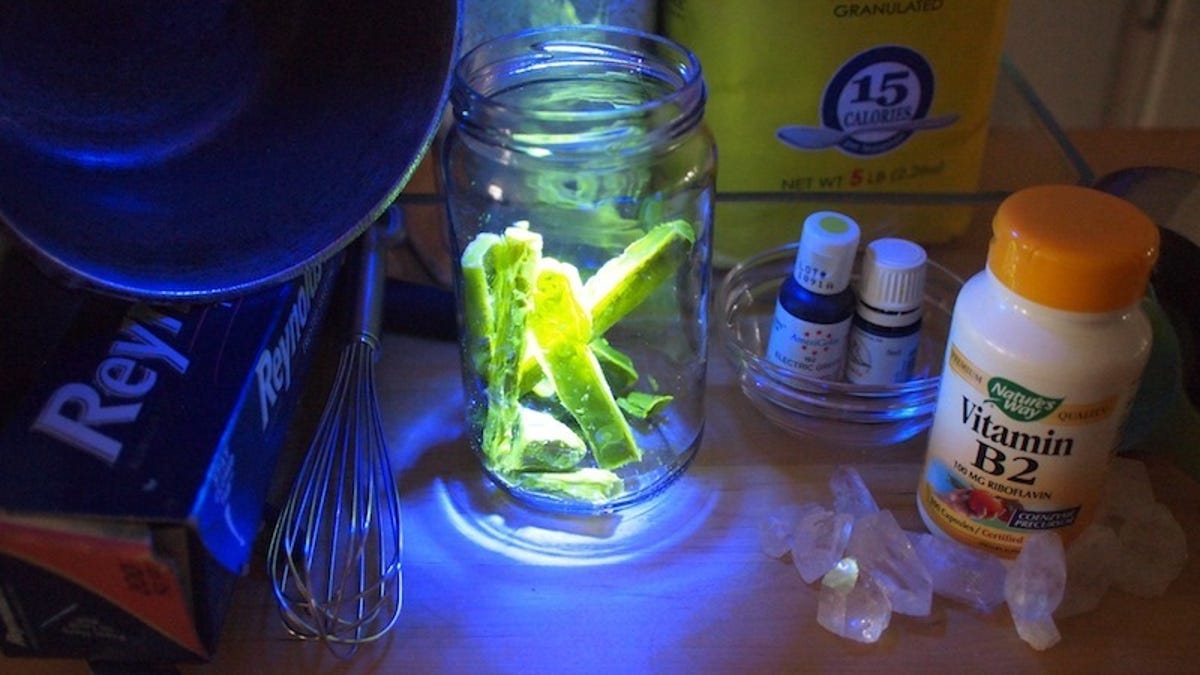Make your own glow-in-the-dark Kryptonite candy
Superman will tremble when confronted with a batch of DIY fluorescent candy made to look like Kryptonite.

Jon Johns managed to max out the comments section on a Google+ post when he hit 500 comments. What got everyone so excited? Glow-in-the-dark candy, of course.
Johns, a community engagement specialist for O'Reilly Media (publisher of Make Magazine), shined a light on a Make recipe for creating Kryptonite Candy for a recent Maker Camp project. Johns talked with Crave about his secrets for making glowing candy that actually tastes good, too.
The candy uses the combined magic of B2 (check your local pharmacy or Amazon) and UV light to create an edible treat with an otherworldly glow. Also known as riboflavin, B2 is food-safe and has the awesome ability to fluoresce yellow under UV light.
Eager to make your own Kryptonite candy? You will need tools like a stove, food coloring, a candy thermometer, and flavoring. Check out Johns' Google+ post for the full recipe.
The recipe is just as intense as making any candy. Temperatures are important and you have to have some stirring skills and good timing. "The hardest part about making the candy is the crackle temperature. You have to get it to 200 and then you have to stop stirring and let it get up to 300 and then pour it as quick as possible. Otherwise, it turns mealy," John says.
Great, you have glowing candy. But how does it taste? "The biggest issue is the Vitamin B2, the riboflavin, has a distinct taste," Johns says. "It's a little bitter." He combated that hurdle with copious amounts of peppermint flavoring.
From here on out, the possibilities are endless. Makers are already working on concepts like fluorescing stained glass, glowing lollipops, eerie cake batter, and Halloween props.
"If you treat it like a media rather than a candy, then it's this translucent moldable natural product that anyone can make in their kitchen," Johns says.
Johns' post generated some interesting comments and concerns. Some people were worried about radioactivity and what would happen when you eat the candy. Johns assures them the candy is not radioactive and there are no Superman-style strength-sapping side effects. "It doesn't glow really, it fluoresces with ultraviolet light," he says.
Johns' final bit of advice for successfully cooking up some Kryptonite is, "Don't be afraid to fail. It's chemistry. You will make a bad batch. It will crystallize. It won't be the right color. Cook up another batch."

